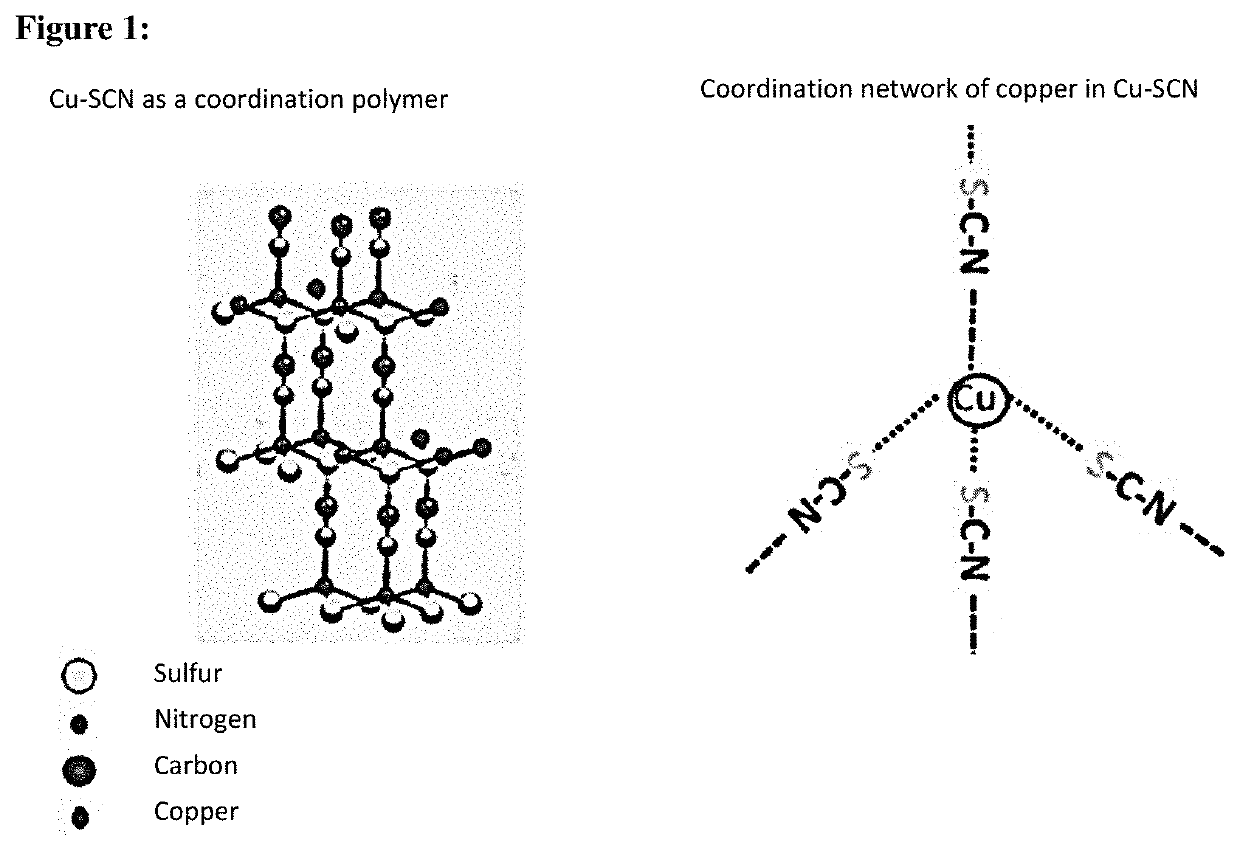Semi-oxidative sol-gel printing method and corresponding ink formulations
a sol-gel printing and oxidative technology, applied in the direction of inks, domestic applications, electrical equipment, etc., can solve the problems of high cost, high cost, and high cost of solvents, and achieves improved solvent quality, improved efficiency, and favorable electrical properties.
- Summary
- Abstract
- Description
- Claims
- Application Information
AI Technical Summary
Benefits of technology
Problems solved by technology
Method used
Image
Examples
Embodiment Construction
>[0194]In the following, the invention will be explained in more detail by means of examples and FIGURES, without intending to be limiting.
BRIEF DESCRIPTION OF THE FIGURES
[0195]FIG. 1 shows a schematic representation of a CuSCN molecule.
DETAILED DESCRIPTION OF THE FIGURES
[0196]CuSCN is a pseudohalide and as a crystal structure forms a coordination network, see FIG. 1, left side. It belongs to the class of coordination polymers, i.e. inorganic polymers. The copper central atom coordinates on three sides with the sulfur atom of the thiocyanate group and on another side with the nitrogen atom of the thiocyanate group, see FIG. 1, right side.
[0197]It is noted that different alternatives to the described embodiments of the invention can be used to execute the invention and to arrive at the solution according to the invention. Thus, the component according to the invention as well as the system are not limited in their embodiments to the above described preferred embodiments. Rather, a pl...
PUM
| Property | Measurement | Unit |
|---|---|---|
| temperature | aaaaa | aaaaa |
| temperature | aaaaa | aaaaa |
| temperatures | aaaaa | aaaaa |
Abstract
Description
Claims
Application Information
 Login to View More
Login to View More - R&D
- Intellectual Property
- Life Sciences
- Materials
- Tech Scout
- Unparalleled Data Quality
- Higher Quality Content
- 60% Fewer Hallucinations
Browse by: Latest US Patents, China's latest patents, Technical Efficacy Thesaurus, Application Domain, Technology Topic, Popular Technical Reports.
© 2025 PatSnap. All rights reserved.Legal|Privacy policy|Modern Slavery Act Transparency Statement|Sitemap|About US| Contact US: help@patsnap.com

